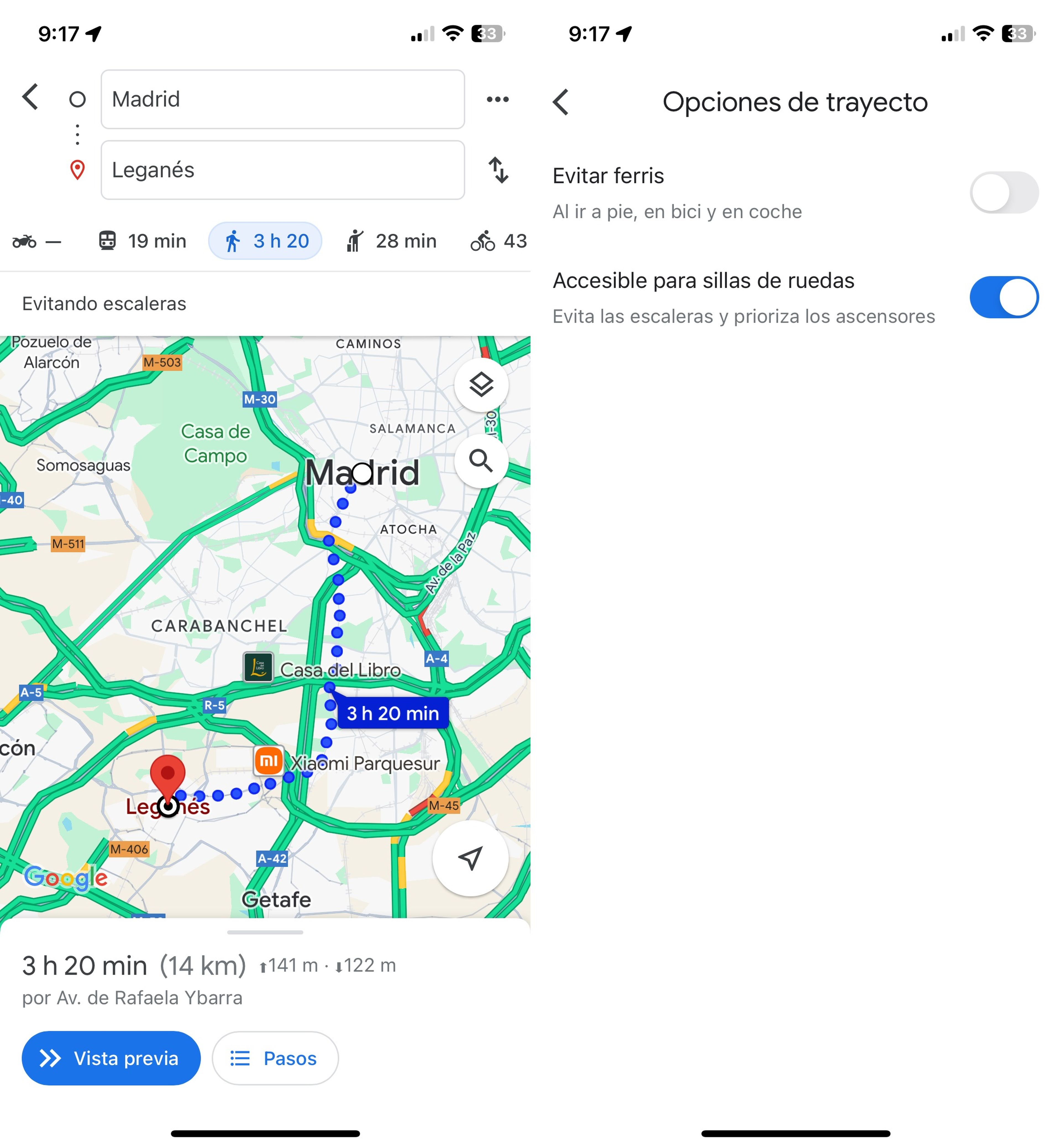
We cannot ignore that Google Maps is positioned as one of the most complete and functional map applications today.
Its features, which offer notifications about the most efficient routes to avoid traffic jams, inform about the price of tolls and alert about DGT radars, make it undoubtedly the best option available.
However, the virtues of this platform go beyond these known functions. Within your repertoire, there are less disclosed options that can be invaluable in various situations.
One of these little-known features is the ability to plan walking routes that avoid annoying stairs.
This feature not only translates into comfort for you, avoiding unnecessary fatigue, but also proves to be an essential tool for those who depend on wheelchairs and are looking for more accessible mobility.
This is how you can avoid stairs on your walking route on Google Maps
It should be noted that this Google Maps functionality It is designed mainly for people with reduced mobility, but also for people who carry any heavy load with them.
To avoid the stairs on your walking routesfollow these steps:
- Open Google Maps on your mobile, whether Android or iOS, and search for the destination you want to reach.
- In routes select Walking and then in Journey options.
- Activate the function Wheelchair accessiblein which you will avoid stairs and at the same time prioritize elevators.

It is important to mention that if you are a user who uses public transportation periodically and has previously activated the “wheelchair accessible” option, don’t worry. It will be applied directly when you switch to walking route modewithout having to select it again.
Once you have activated this hidden Google Maps trick, the application will show you the most accessible walking routes for you. These will prioritize elevators, as well as ramps instead of stairs.
The functionality has a series of benefits for people with reduced mobility, such as greater safety and comfort when moving, greater autonomy, freedom to plan trips, as well as greater inclusion in society.
Also See:
Apple Reveals iPhone 15 Pro and iPhone 15 Pro Max with Specs
iphone 15 Pro Max Specs and Features – Ultimate Smartphone
Nokia N820 Specs – Next level Smartphone
iTiny 12 Pro Max Specs, Camera and Features – Compact Smartphone
Google Pixel 7 pro vs Samsung Galaxy S23 Ultra – Specs, Camera and Comparison



